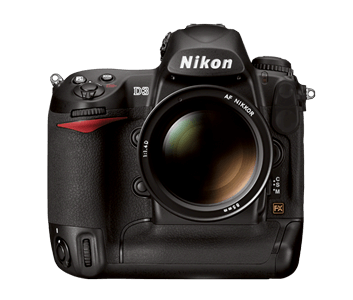I'm narrowing the scope of this countdown to the last decade for a pretty simple reason, and that's to allow me to disregard most of the industry 'firsts' that came to define their class, like the Nikon D1, Canon D30, Canon 1Ds etc. Anyway, here they are:
5. Canon 20D
 |
| Canon Museum |
These were necessary changes, too. When the 300D and D70 were introduced in 2003/2004, something had to be done to the enthusiast models in order for them to be clearly superior to the new entry level models, and the 20D answered that call, as did the Nikon D200 shortly thereafter. Better still, with the spec jump enthusiast models made after the 20D, there was no longer a need to cripple entry-level models like the 300D, as was made apparent when the 350D was announced.
Influence seen in: every enthusiast DSLR to date
4. Canon 300D & Nikon D40
 |
| Canon Museum |
 |
| Nikon |
In the case of the 300D, it was the first DSLR kit to launch below $1000, a price so low compared to other bodies available at the time it had some of its software features crippled significantly (forced AI Focus in PASM, no custom functions, shallow buffer etc) in order to differentiate it. However, it had all the basics there, like the same framerate and resolution as the 10D, and even added new features like the EF-S mount and a DIGIC processor.
The D40 did a similar thing in 2006, launching at $599 w/kit lens at a time when new entry-level bodies had pretty much settled at $900, and again, the D40 was stripped down to the bare essentials in order to do this. Three-point AF, 6 mp resolution, and a low framerate. But just like the 300D it helped new users get their foot in the door without breaking the bank.
If any of this sounds familiar, it should. The Sony A850 tried to do the same thing for full-frame in 2009, and the Nikon D600 and Canon 6D are aiming for the same in 2012/2013.
Influence seen in: Canon XXXXD series, Nikon D3XXX series, entry-level mirrorless bodies
3. Olympus E-P1
 |
| Olympus-Global |
The E-P1 fixed this, by giving the camera a rectangular rangefinder-style body that was devoid of bulbous protrusions, which, when combined with a small prime, could actually fit in a jacket pocket. Today every single mirrorless system (except perhaps Fuji...and obviously Leica) now offers at least one ultra-compact body and pancake lens.
Influence now seen in: All Olympus PEN bodies, Panasonic GF & GX series, Nikon 1 V series, EOS M, Pentax Q, Sony NEX 3/5 series, Samsung NX
2. Canon 5D Mark II
 |
| Canon Museum |
But its importance in regards to video doesn't end there. The 5D Mark II represented what was by far the cheapest and easiest way for the masses to take large sensor video, and was even cheaper than dedicated interchangeable lens video cameras - and those had smaller sensors. Essentially what the 5D started was the video equivalent of the desktop publishing 'revolution' (hyperbole) of the 1980's.
1. Nikon D3
 |
| Nikon |
So why is this #1 when everything else on this countdown has introduced something a little more accessible and widespread? Well, every other body listed here has already seen the maximum extent of its influence. Every body out there now has HD video capabilities, and all of the classes the others in this countdown helped create aren't going to expand any further in the future. Yet 6 years on, the combination of a full-frame sensor and performance is still in the process of trickling down the product lines and brands, and with it comes the greater potential for future impact.
Another important note, the D3 was also the first body to offer a rather insane expanded ISO range, where its ISO 25,600 greatly surpassed the ISO 6400 maximum that the next nearest competitor offered. Not to mention that the ISO 3200 max for consumer level bodies was stagnant prior to its release.These days bodies go up to 102, 400
Influence seen in: Sony A99, Canon 5D III & 1Dx, Nikon D600
Honourable mention:
Konica-Minolta 7D
The K-M 7D has mostly been forgotten by now, being the company's swan song before its DSLR assets were transferred to Sony in 2006. The body was pretty much in-line with its contemporaries though at a higher price. However it had one ace up its sleeve: in-body image stabilization that nearly matched the effectiveness of what in-lens systems of the era could offer.
After its introduction and continued use by Sony, Pentax and Olympus started offering this as a standard feature in their bodies. As a way to stay competitive, Canon and Nikon magically 'found a way' to offer image stabilization for (nearly) free on their kit lenses and some of their lower-end consumer zooms in 2008, while subsequently offering 4 and 5-stop systems in later years. You have the K-M 7D to thank for this.

No comments:
Post a Comment